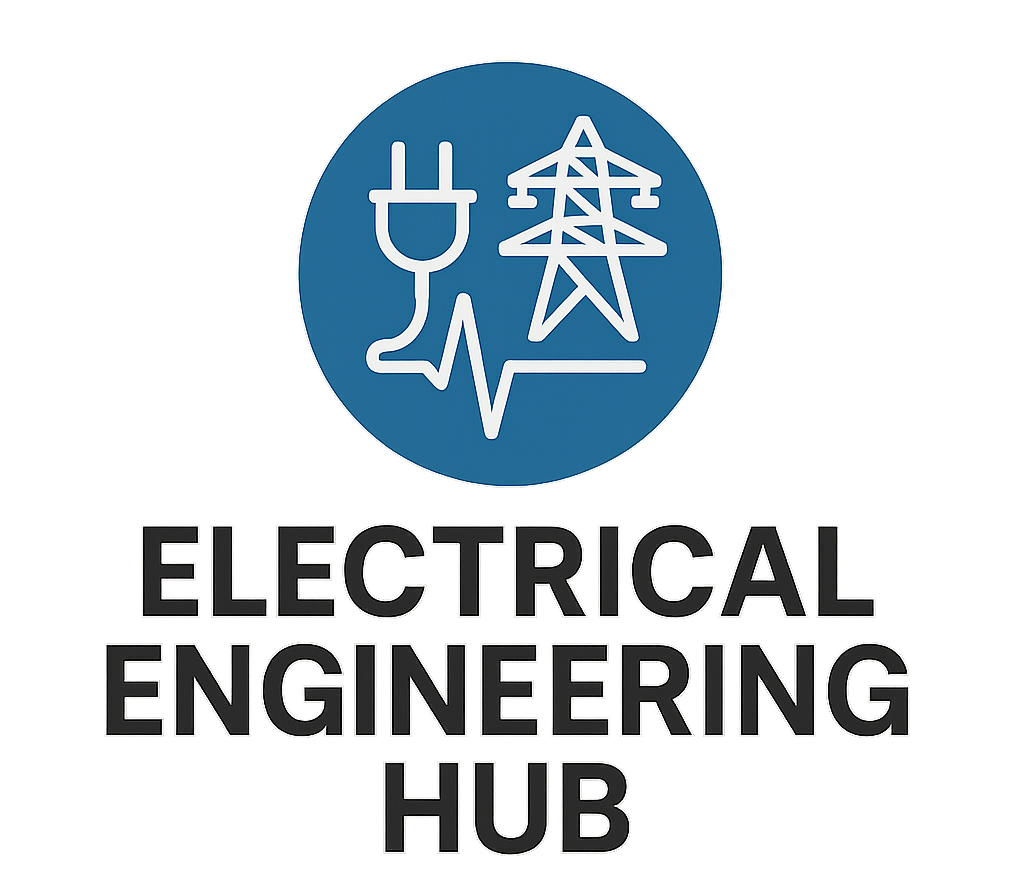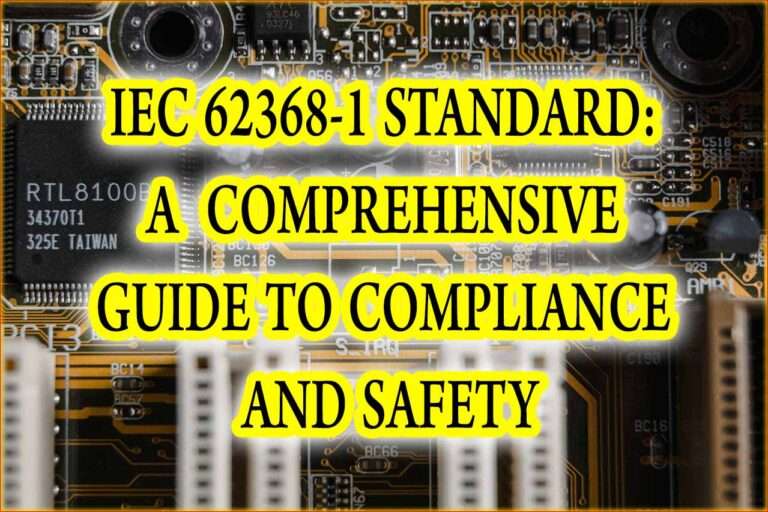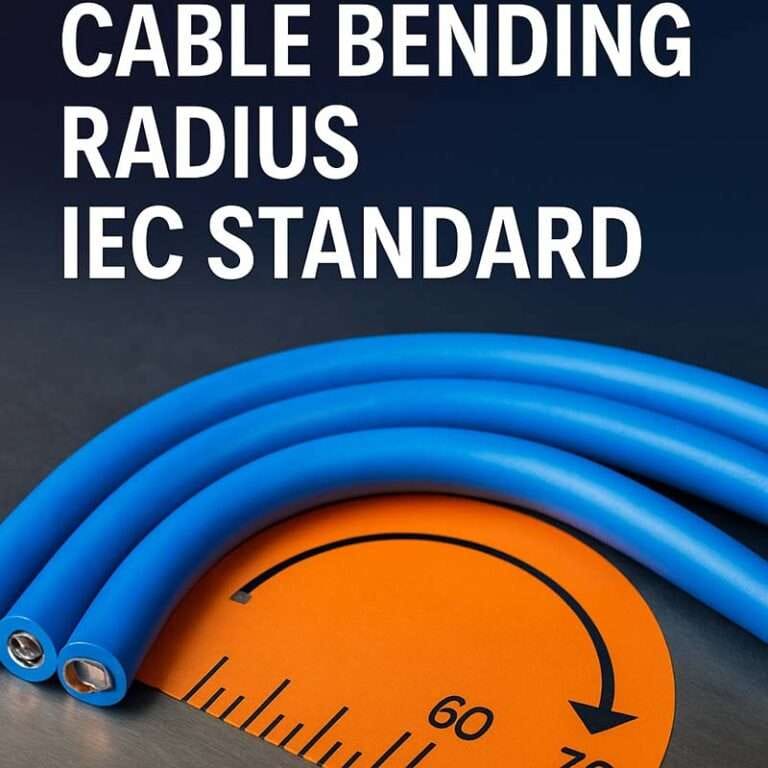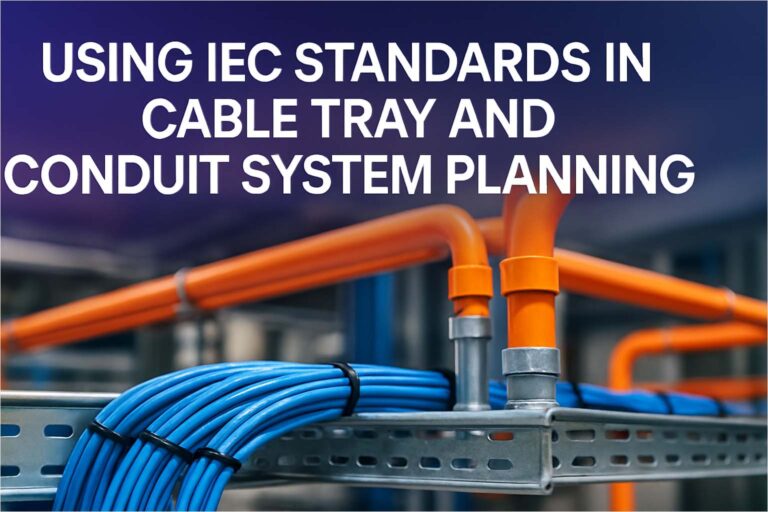IEC Standards for Instrument Earthing – Key Clauses Explained
IEC standards form the backbone of safe and reliable electrical installations worldwide. They are not just guidelines but globally recognized benchmarks for quality and safety. When it comes to IEC earthing standard requirements, clarity is critical because improper earthing can lead to equipment malfunction, safety hazards, and compliance failures. Earthing ensures that fault currents are safely dissipated, voltage levels remain stable, and personnel are protected from electric shock.
Table of Contents
Table of Contents
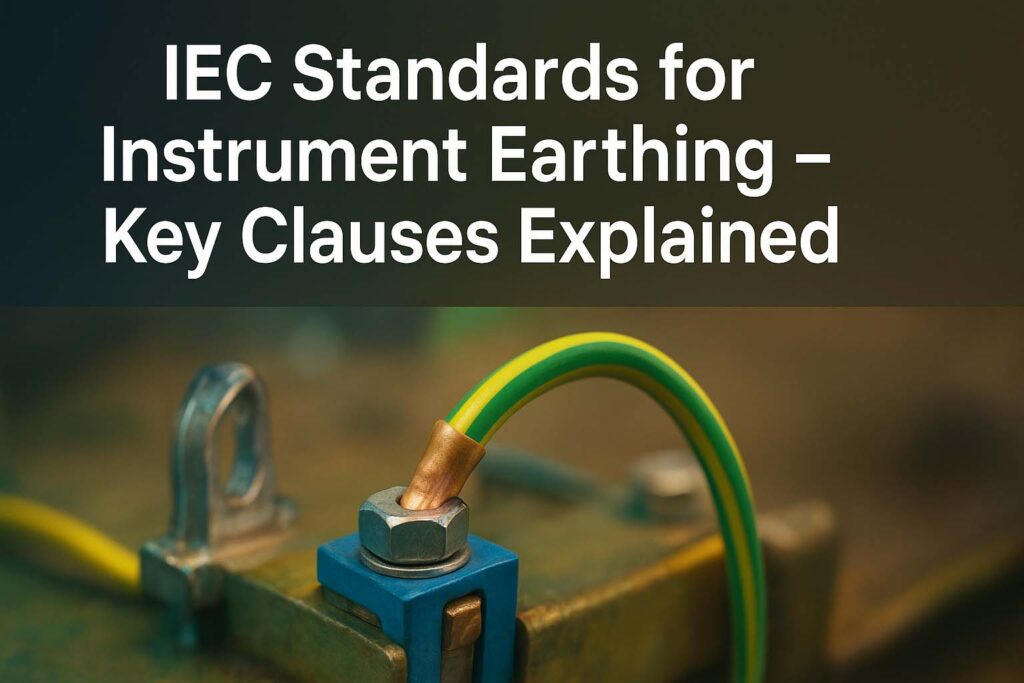
The instrument earthing IEC standard provides a structured approach to grounding practices in industrial, laboratory, and hazardous environments. These standards define the correct way to design, install, and test earthing systems for different equipment categories. Without following them, even a well-built system can face unpredictable operational issues.
For engineers, technicians, and compliance officers, understanding IEC clauses is not optional—it is essential. Each clause under IEC standards is written to eliminate ambiguity and ensure consistent grounding practices worldwide. Whether you work in an industrial plant, a research lab, or an oil refinery, these standards apply directly to your earthing design and implementation work.
Key Takeaways:
- IEC standards create a uniform approach to electrical safety across industries.
- Specific clauses under different IEC numbers define earthing for installations, testing, EMC, and hazardous locations.
- Understanding the context of each IEC clause helps in proper design and compliance.
IEC 60364 – Electrical Installations
The IEC 60364 earthing requirements focus on the design and safety of low-voltage electrical installations. This standard covers how to establish a protective earthing system to ensure both human safety and system reliability.
IEC 60364 outlines the different earthing arrangements, such as TN, TT, and IT systems. Each has specific rules for conductor sizing, fault current path design, and neutral bonding. For example, a TN-S system keeps the neutral and protective conductors separate to reduce electromagnetic interference in sensitive equipment.
A vital clause in IEC 60364 addresses the continuity of protective conductors. This is especially relevant for instrumentation cables, where shielding and grounding need to maintain low impedance paths. If continuity is broken, fault clearance times increase, potentially leading to hazardous voltages on exposed conductive parts.
Engineers often refer to Part 5 of IEC 60364, which provides precise sizing methods for earthing conductors based on fault current and permissible temperature rise. These calculations are essential in large facilities where multiple earthing points exist.
IEC 61010 – Safety for Measurement, Control, and Lab Equipment
The IEC 61010 grounding standard focuses on measurement, control, and laboratory electrical equipment. Unlike IEC 60364, which is installation-wide, IEC 61010 is equipment-specific. It addresses the internal grounding arrangements that manufacturers must provide to ensure operator safety and electromagnetic compatibility.
One notable clause is about protective earthing of accessible conductive parts. For example, a metal chassis in a laboratory instrument must have a dedicated protective earth terminal connected to the installation’s earthing system. This reduces the risk of electric shock if internal insulation fails.
Another critical requirement involves signal grounding. In sensitive instrumentation, improper grounding can cause measurement drift, noise pickup, and data corruption. IEC 61010 provides guidance on segregating protective earth from functional earth where necessary. This is especially important in labs with high-precision measurement systems.
Manufacturers designing instruments for export must comply with IEC 61010 to access global markets. Compliance is often verified during type testing, which includes grounding continuity and insulation resistance measurements.
IEC 61000 – EMC Grounding Requirements
The IEC grounding guide for electromagnetic compatibility is outlined in IEC 61000. While most engineers think of EMC in terms of shielding and filtering, grounding is equally important. This standard emphasizes that grounding paths must be designed to minimize high-frequency impedance, not just DC resistance.
For industrial control systems, IEC 61000 suggests star-point grounding or mesh bonding networks depending on the size and complexity of the system. Star-point grounding is effective in small systems where all equipment can be tied to a single ground reference. In contrast, mesh bonding networks work better in large plants where multiple parallel ground paths reduce voltage differences.
A common issue addressed by IEC 61000 is ground loops. These occur when multiple grounding points create unintended current paths, leading to interference in instrumentation. By following IEC recommendations on bonding and shielding, engineers can eliminate most EMC-related grounding issues.
The standard also covers transient protection, ensuring that lightning or switching surges are safely diverted to earth without damaging equipment. This is particularly critical in outdoor installations or in regions with high lightning activity.
IEC 61557 – Testing Earthing Systems
IEC 61557 is the standard for performance requirements of equipment used to test protective measures in electrical installations. It is highly relevant for instrument earthing verification in both new and existing facilities.
The standard specifies the accuracy, measurement ranges, and safety requirements for earth resistance testers, continuity testers, and loop impedance meters. Clause 4.3, for instance, defines the minimum test current for continuity testing to ensure reliable results.
In practice, IEC 61557 is applied during commissioning, periodic inspections, and after major modifications. Engineers use its guidance to select the right testing method for the earthing system—whether that’s the fall-of-potential method, clamp-on testing, or selective measurement.
Regular testing not only ensures compliance but also detects gradual degradation in the earthing system due to corrosion, mechanical damage, or environmental changes. This helps maintain consistent protection levels over the life of the installation.
IEC 60079 – Hazardous Areas
IEC 60079 covers explosive atmospheres and sets strict rules for equipment and installations in hazardous areas. Earthing in these environments is not only about electrical safety but also about preventing static charge buildup that could ignite flammable gases or dust.
Know more about iec hazardous area classification
One of the key clauses specifies bonding of all conductive parts to prevent potential differences. Even non-electrical equipment, like metallic tanks and piping, must be earthed in hazardous zones.
In Zone 0 or Zone 1 areas, IEC 60079 recommends special earthing materials resistant to corrosion from chemical vapors. It also advises regular inspection intervals because environmental factors can rapidly degrade earthing integrity in such areas.
For instrumentation in hazardous areas, earthing design must consider both safety and signal integrity. For instance, shield grounding must be carefully managed to avoid introducing noise into intrinsically safe circuits.
Practical IEC Clause Interpretation Table
Below is a reference table summarizing key clauses from the discussed IEC standards and their practical implications:
| IEC Standard | Key Focus | Example Clause | Practical Application |
|---|---|---|---|
| IEC 60364 | Electrical Installations | Protective conductor sizing | Determine earthing conductor cross-section for fault currents |
| IEC 61010 | Lab & Control Equipment | Protective earthing of chassis | Ground all accessible conductive parts in lab instruments |
| IEC 61000 | EMC Grounding | Ground loop prevention | Use star-point or mesh bonding to avoid interference |
| IEC 61557 | Testing | Minimum test current for continuity | Ensure reliable continuity measurement during inspections |
| IEC 60079 | Hazardous Areas | Bonding of conductive parts | Prevent static charge in explosive atmospheres |
Understanding and applying these clauses ensures compliance and enhances both safety and operational reliability.
Conclusion
IEC standards provide a unified approach to earthing across various industrial and technical fields. From installation-wide rules in IEC 60364 to equipment-specific guidelines in IEC 61010 and hazardous area requirements in IEC 60079, each standard addresses a different but essential aspect of grounding.
By interpreting clauses correctly and applying them in practice, engineers can create systems that are safe, compliant, and reliable over time. Whether it’s preventing shock hazards, reducing interference, or avoiding static discharges, the IEC earthing standard remains the definitive reference for professionals worldwide.
When working on any grounding project, always align with the instrument earthing IEC standard to ensure your design meets both safety expectations and operational performance goals.
Follow Us on Social:
Subscribe our Newsletter on Electrical Insights for latest updates from Electrical Engineering Hub
#IECearthingstandard, #InstrumentEarthing, #IEC60364, #EarthingRequirements, #IEC61010, #GroundingStandards, #ElectricalSafety, #InstrumentationGrounding, #IECstandards, #ElectricalEngineering, #IndustrialEarthing, #GroundingGuide, #ElectricalCompliance, #IECgrounding, #PowerSystemSafety
